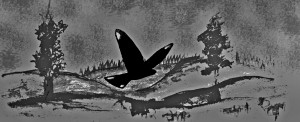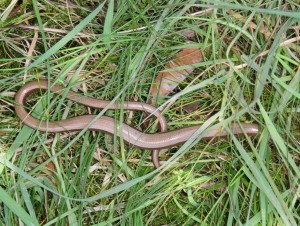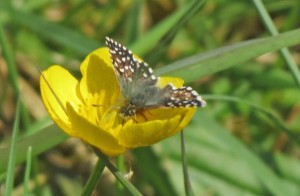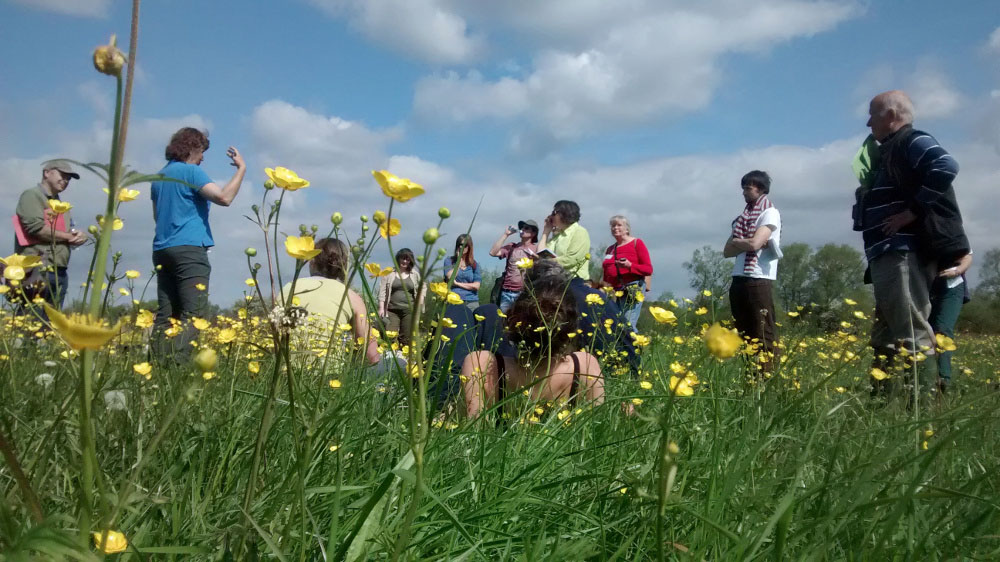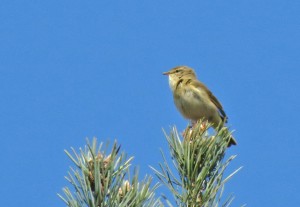GNS has objected to the proposed development at the Cinderford Northern Quarter.
The full text of our objection follows, a copy of our objection is posted on the council’s planning portal web page. The whole application together with all documents received are available to view – copy and paste the following link into your browser’s address bar, or simply click on it to open it in another window:
http://publicaccess.fdean.gov.uk/online-applications/applicationDetails.do?activeTab=summary&keyVal=N4FS82HI01000
otherwise go to The Forest of Dean District Council web-site, choose Planning and “simple search”, use the word “Northern” as the key word and you will find the application starting with the words “A Hybrid planning application comprising demolition…”
Our Objection:
The Society’s Standpoint
The Society’s response to the above planning application begins with our stated position first published on the Society’s web-site on 1st December 2013 and subsequently in GNS News in March 2014. In essence, that is as follows:
“Having discussed all aspects of the Cinderford Northern Quarter (CNQ) Development and the Cinderford Regeneration Environmental Forum at the Executive Committee Meeting on 27th November 2013, the Executive Committee of the Gloucestershire Naturalists’ Society (GNS) has concluded that the Society’s standpoint and course of action should be as follows:-
The Society does not in any way support or condone the CNQ development as proposed and very much regrets the effect that the development is likely to have on the wildlife and habitats across and in the immediate vicinity of the development area.
The Society believes that whilst the investment and potential improvement for the economy and employment prospects is warranted and welcome in the Forest of Dean, especially in the current economic climate, the development as proposed is in the wrong location and would be far better sited elsewhere for a variety of reasons, not least the conservation of the species and habitats in the area.
The Society believes that, if protest against the Area Action Plan fails, and no engagement in the mitigation process takes place, any future planning applications within the Area Action Plan framework are likely to be approved with little or no change.
The Society believes the best means for influencing planning and development decisions will be via the Cinderford Regeneration Environmental Forum. For that reason, the Society will participate in the Forum and promote the interests of wildlife within that arena as best it can, alongside the representatives of Gloucestershire Wildlife Trust (GWT) and other organizations.
The Society notes the six identified “Purposes” within the remit of the Forum and will endeavour to ensure that these are properly applied in the interests of wildlife.”
Summary – The Society very much supports the regeneration and investment proposed for Cinderford and the wider Forest of Dean but absolutely believes that the siting of the investment on the Cinderford Northern Quarter area is wrong because of its impact on the environment, habitats and wildlife there and because of the separation of the development from those who should benefit from it.
The Society believes that the position of the proposed investment should be substantially closer to the population, existing infrastructure and facilities offered by Cinderford town, for the benefit of both those on the development site and for the town and its inhabitants and to more directly support the regeneration of the town and other facilities there.
The Development Proposal
The Society has had a limited time in which to peruse the documentation attached to the Hybrid Application which when first published on the Forest of Dean District Council’s web-site amounted to over 140 documents and had by 15th May 2014 been extended to well over 150 documents.
The documentation in itself is extensive and complex, there are many hundreds of pages and whilst some are reasonably easy to read and interpret, much of the language and layout of some documents is technical and requires much study in order to properly understand and digest them.
The Society believes the impact of the development will extend far beyond the confines of the site, both in terms of the natural environment and on the surrounding area and its population; we have doubts and concerns relating to many facets of the development and its effects, both during the construction phases and after occupation in the longer term; we have similar concerns relating to the existing flooding and geological issues under, on and around the site: we are particularly concerned that past mining on the site may render the proposed buildings dangerous or unstable, and that the cost of identifying ancient mineshafts and flooded galleries will make the project unsustainable. Many of the objections already submitted on this topic by qualified mining engineers to the Forest of Dean District Council are eloquent, notably the 2012 report submitted to the Forest of Dean Verderers, and the note by The Coal Authority, which surrounds its lack of objections by many serious pre-conditions. Because of the concerns we have, and given the uncertainties, the Society believes that it is inadvisable to proceed on a site with such complex and potentially dangerous issues inherent in it.
However, since we are a Naturalists’ Society, we have chosen to confine our primary concerns to the habitats and species that will be affected.
Ecology & Biodiversity
Turning then to the Society’s primary interest, that of the effects upon the habitats and wildlife in the area, we have significant concerns that the mitigation proposals outlined in Chapter 7 “Ecology & Biodiversity” do not match the aspirations of the Biodiversity Strategy for the area. We are also very much of the opinion that the extremely short time frame envisaged for carrying out the mitigation operations will be inadequate to allow the many and varied species of wildlife to adapt in time.
There is a constant repetition of the phrase “Based on the above mitigation, it is considered that potential impacts on (taxa) from phase XXX will be fully mitigated” and the overall impression is that the effects upon wildlife and habitats will be either neutral or slightly negative. This is not an adequate response to the disturbance and destruction that will result from the development of the site, given that much has been made of the intended “net increase” for wildlife and bio-diversity as a result of the development.
We believe that Chapter 7 seriously undervalues the wildlife and biodiversity and fails to understand and appreciate the interdependence that is intrinsic within an evolved ecosystem. CNQ is by definition a “brown-field” site; recent studies and publications, not least by the Gloucestershire Wildlife Trust, demonstrate clearly that so-called “brown-field sites” are often much richer in terms of diversity then “green-field sites”, where agricultural change has severely reduced, if not eliminated, biodiversity value; the site has regenerated and restored itself, over several decades since the cessation of industrial activities, into a complex and multi-faceted matrix of varied habitats used by a great number of resident, breeding and wintering species. Within this framework, many species interact with, and depend upon, each other and those above and below them in the food chain so that the ecology and biodiversity should be considered as a whole, and not as a list of those few protected species followed by little or no consideration for all else.
Birds:
This Society and others believe there is a serious undervaluation of the overall mix and interactivity of the list of species recorded on and around the site. Each species uses the site for one reason or another and the mix of species is a dynamic and changing entity through the seasons of the year. It is a breeding site for Tree Pipit, Willow Warbler, Chiffchaff and others that are all to some degree threatened both locally and across the UK.
There are already identified on and around the site a series of species that are of Conservation Concern in the UK because of their inclusion on the national Red (ten, according to the RSPB) or Amber (21, again according to the RSPB) Lists; this is an immediate and obvious reference to the status of these species and should warrant greater consideration of the effects that will be rendered upon them by the proposed development and its after effects. Species which have their Gloucestershire stronghold in the Forest of Dean, and are recorded in good numbers in and around Cinderford Northern Quarter, include the Hawfinch: according to the British Trust for Ornithology’s “Bird Atlas 2007-11”, published in 2013, the Forest of Dean, North Wales and the New Forest are the three remaining UK strongholds of this species; indeed the new “Birds of Gloucestershire” (published in 2013, and based in very intensive coverage of the county) chose Hawfinch as the cover species for the whole volume, to emphasize its iconic status in Gloucestershire. Other species of national concern with particularly strong populations in the Forest of Dean in general and Cinderford Northern Quarter in particular, are Goshawk and Willow Tit
Bats:
Much attention has been given to the Bats (particularly Lesser Horseshoe Bats) on the site, given the proximity of the European recognised SAC, for which CNQ forms as essential feeding and roosting area. It would appear that much of the mitigation is based on the confidence that arises from predictions that could easily and ultimately fail to be correct. Whilst the mitigation and accommodation measures that are proposed appear to deal with all concerns relating to the bat populations, we are not convinced by any means that these measure will work; in particular we are very doubtful that there will be time (given the very tight schedules for beginning construction work for the bats to adapt their behaviour to match the new environment and predicted outcomes. There is very great local expertise on this issue in the local Bat Group, and we urge the proponents of the scheme to take full account of the comments of local experts.
Other Mammals:
There are a number of measures offered for dealing with mammals on the site, but the numbers are low and the list of species is limited. Whilst we believe the mammals are the taxon least likely to be impacted by the development, there is no doubt that some will and the introduction of roads on the site will inevitably lead to casualties.
We also have concerns that the development of the college and hotel facilities and of the residential area will lead to the increase of rats and domestic animals that will significantly impact on the wildlife in the medium to long term. Whilst figures are uncertain and emotive, there is no doubt that the introduction of alien species to a site that is currently little troubled by them, will increase the predation, disturbance and mortality suffered by wildlife. There is even the potential to introduce some feral individuals that would be absolutely unwelcome.
Amphibians and Reptiles:
These taxa are those that will be most directly and significantly affected by the construction phases and by the overall loss of scarce and irreplaceable habitats. CNQ is a prime location in the county for all three species of newt, not only for the European Great Crested Newt, but also for Palmate Newt and Smooth Newt. It is a prime site for Adders, which have a substantial home range and need connectivity between populations to maintain genetic diversity. Adders are in severe decline at national level, because of habitat loss. We are aware that there have already been casualties during the site investigation works and it is acknowledged by all that further casualties will arise as time goes on. We are not at all convinced that the proposals for collection and translocation will be effective, the more so as the time schedule is very tight, and foresee the loss of these species on a grand and unacceptable scale.
Invertebrates:
The Ecology and Biodiversity documentation chooses to treat all invertebrates as a single group. This is quite astonishing given the diversity and volume of invertebrates on and around the site. Invertebrates make up the vast majority of the animal kingdom and each type or group has vastly different needs, habits, habitats, lifestyles, purposes, causes and effects within the ecosystem.
To consider one group in particular, the Odonata (Dragonflies and Damselflies) on and around this site are particularly special in the context of the Forest, the county and the country; 29 of the 32 Gloucestershire species of Odonata have been recorded in the 10k square that surrounds the CNQ site; several of them are the most threatened and scarce of their type.
Similarly, the Lepidoptera on this site include several threatened, scarce and remarkable species that require proper consideration in order to preserve them and their habitats. The submission by Butterfly Conservation notes that, among other Lepidoptera, declining butterflies such as Wood White and Dingy Skipper and the rare Forester Moth were recorded on the site in 2013, while Grizzled Skipper was previously recorded there. Two other rare butterflies, the Small Pearl-bordered and Pearl-bordered Fritillary are both present.
Much effort and resource is being expended in the Forest, the county and other parts of the country to preserve and keep some of these species from the brink of extinction. It is a matter of much regret that on this site, they could be lost without having been properly considered or accommodated.
The Society believes that each of the major groups of invertebrates at the very least should warrant consideration in its own right and separately from the others with due regard given to accommodating and preserving them and their specific habitats. Furthermore, they should be considered in the context of their relationship with the other, higher species that interact with and depend upon them.
Botanical and other taxa:
The changes to the landscape will undoubtedly affect the plants, fungi and other taxa that do exist there. Apart from the physical damage caused by the construction, there will inevitably be a rise in the pollution levels over time with heavy elements and gases settling in the bottom of what is effectively a closed valley. There is no proposed mitigation for these effects; the botanical world has significantly undervalued in the Ecology and Biodiversity documentation.
Mitigation:
Aside from our reservations in respect of the mitigation in general, we as a Society are convinced that some of the mitigation measures proposed to have positive effects for some species will surely have very negative effects upon the species already in the areas to be changed and “improved”. Habitats are like energy, they cannot be created, they can only be changed from their existing state so that there can only be a negative impact on those species adapted to deal with and live in any given existing habitat by altering it to suit another species. No species, despite its status and threat level (and the associated protection that goes with that) should be considered more important than another. Each species has its place within the ecosystem and should wherever possible be allowed to remain and thrive in that position; it should not be sacrificed for something that is perceived or purported to be more important
Humanity:
Whilst the Society has recognised and voiced its support for the regeneration of Cinderford and the wider Forest for the good of the population, the increased presence of humans on the CNQ site during and after construction and occupation will have negative effects on the surrounding area. The CNQ site, whilst used for recreation by the local population has in fact been relatively undisturbed by human presence and effects in its current state and for some time. It has been relatively remote and much of the human use of the site in recent times has been for simple and quiet enjoyment. This will change, by the introduction of the residents and their offspring and pets, the student population at the college and the employees in the industrial zones. This will ultimately lead to the degradation of the areas immediately adjacent to the proposed developments and the surrounding area. Whilst the population should be able to access and enjoy the natural world and environment, their very presence has unintended consequences and effects.
Conclusion:
Given the above comments, The Gloucestershire Naturalists’ Society finds itself in the position of having to object to the proposed Cinderford Northern Quarter development. We are firmly of the view as we have stated before and above, that whilst we very much support regeneration and the reintroduction of employment and some measure of prosperity to Cinderford and the wider Forest, we cannot support the development of this site to the detriment of the habitats and wildlife that currently exists upon it.
At this time we have little confidence in much of the proposed mitigation, nor in the very short time allocated for it, and do not see any significant evidence for the suggested positive outcomes for wildlife and the environment.
We believe that the proposals thus far are a grudging response to the Ecological and Biodiversity requirements imposed by law that should have been foreseen and adequately dealt with at a much earlier stage in the planning of the development, with significantly more consideration given to the ecosystem as a whole, rather than simply concentrating on the few protected species that exist on the site.
Gloucestershire Naturalists’ Society
28th May 2014

